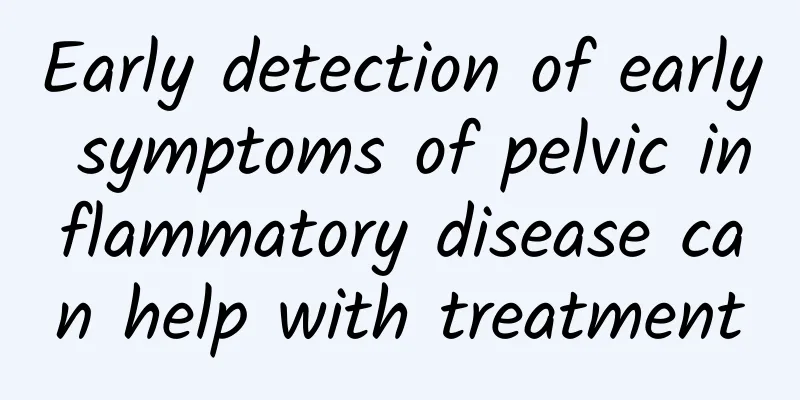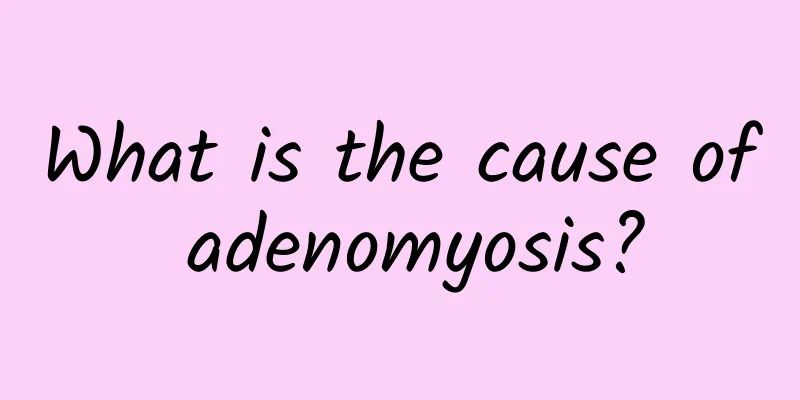Causes of endometrial thickening

|
Endometrial thickening is a disease that is more common in menopause or adolescence and can affect menstruation. However, for some women, endometrial thickening is pathological. So what causes endometrial thickening? The following editor will introduce to you what causes endometrial thickening. What causes endometrial thickening? Endometrial thickening is common in middle-aged women over 35 years old. It has a certain tendency to become cancerous, so it is classified as a precancerous lesion. This has a great impact on women's physical and mental health. So, what are the causes of endometrial thickening? Let's introduce it. 1. Obesity: Androstenedione secreted by the adrenal glands of obese women is converted into estrone by aromatase in adipose tissue. The more adipose tissue there is, the stronger the conversion capacity is, and the higher the estrone level in plasma is, resulting in the continuous effect of estrogen. 2. Endocrine functional tumors: Endocrine functional tumors are rare tumors, accounting for 7.5% of endocrine functional tumors. Pituitary gonadotropin dysfunction and ovarian granulosa cell tumors are also tumors that continuously secrete estrogen. 3. Simple endometrial hyperplasia: The lesion is slightly larger in the uterus, with obvious endometrial thickening, sometimes diffuse polypoid changes. The uterine curettage is large and can be mixed with red and smooth polyp tissue. Microscopically, the lesion is diffuse, involving the functional layer and basal layer of the endometrium, with stroma and glandular hyperplasia at the same time, and no glandular congestion is seen. The glands vary in size and have smooth contours. The morphology of glandular epithelial cells is similar to that of the normal late hyperplastic stage, without atypia. 4. Complex endometrial hyperplasia: The etiology of complex endometrial hyperplasia is similar to that of simple endometrial hyperplasia, but due to the focality of the lesions, it may also be related to the distribution of hormone receptors in the tissue. A small number of complex hyperplasias can develop into atypical hyperplasias, which affects the prognosis. The lesioned endometrium can be thickened or very thin, or it can be polypoid. Unlike simple hyperplasia, the lesion is a focal hyperplasia of glandular components and does not involve the stroma. The amount of uterine curettage can be more or less, often accompanied by normal, atrophic or other types of endometrial hyperplasia. Because everyone's living environment and physique are different, the causes of endometrial thickening are also different. Specifically, we need to go to a professional medical institution for examination. Treatment of endometrial thickening should be symptomatic according to different causes. First, the patient should be examined for polycystic ovaries, functional ovarian tumors or other endocrine diseases, and then targeted treatment should be carried out. Drug treatment and surgery are commonly used. |
>>: Symptoms of premature ovarian failure
Recommend
After menopause, women may have 4 unspeakable problems. Doctors say: It's normal, don't be embarrassed
Menopause, like a "small turning point"...
What preparations and checks are needed before abortion?
Before artificial abortion (abbreviated as induce...
Will not paying attention to hygiene lead to adnexitis?
Adnexitis is a common disease in gynecology. Most...
What are the consequences of uterine fibroids spreading? Is uterine fibroids spreading serious?
Uterine fibroids are a common tumor of the female...
The main causes of cervical erosion
Cervical erosion is a common gynecological diseas...
How much does it cost to treat female cervical warts?
Presumably, most women with cervical warts are no...
Pay attention to the surgical treatment of pelvic inflammatory disease
Understanding the treatment methods for pelvic in...
You tap the gallbladder meridian every day, but edema still occurs frequently? If you neglect to pay attention to the details, the effect of reducing edema will be halved!
You tap the gallbladder meridian every day but yo...
How to identify biochemical pregnancy and ectopic pregnancy
How to identify biochemical pregnancy and ectopic...
Brown fat can help you lose weight. Eating apples and strawberries is effective
After entering middle age, many women can’t help ...
Understand the causes of cervical hypertrophy from multiple aspects
The occurrence of cervical hypertrophy has a cert...
Do pregnant women have to take a lot of supplements? 6 nutritional principles for early pregnancy, 3 dietary taboos to pay attention to
During the pregnancy process, the pregnant mother...
Can pelvic inflammatory disease cause infertility? How to prevent and treat it in daily life
How to prevent pelvic inflammatory disease? Can p...
Can I drink coffee during my period? Not really
Coffee can relieve fatigue and refresh the mind, ...
Symptoms of pelvic inflammatory disease in women can cause lower abdominal distension
Experts say that the symptoms of pelvic inflammat...









